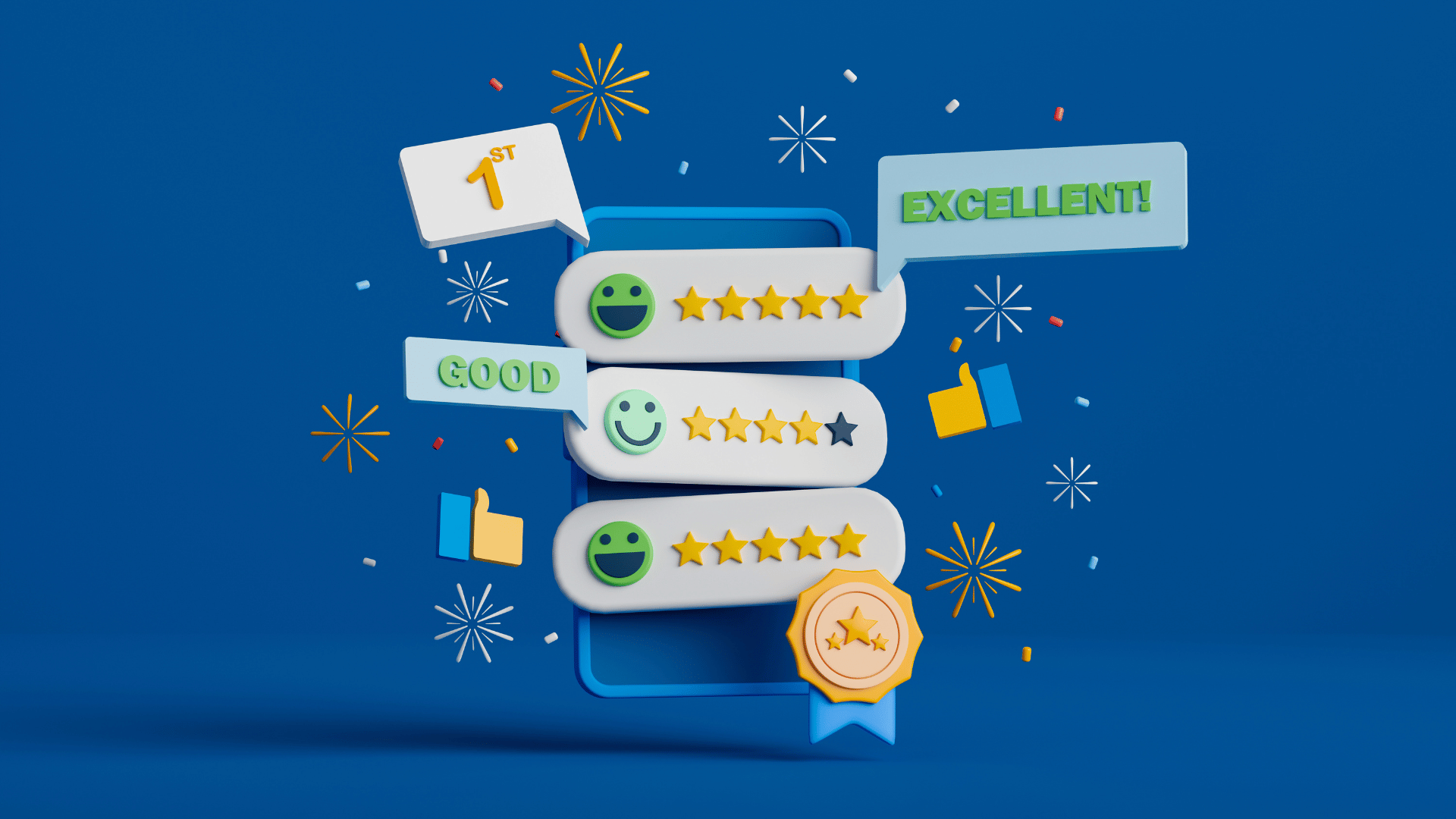Key takeaway:
- Customer Experience is a competitive advantage: Improving customer experience through cloud scheduling solutions can give businesses a competitive edge by providing better service and meeting customer expectations.
- Benefits of Cloud Scheduling: Cloud scheduling solutions streamline appointment scheduling, improve accessibility and convenience for customers, enhance communication and engagement, and enable personalization and customization, resulting in an enhanced customer experience.
- Measuring and improving customer experience: Cloud scheduling solutions provide data and analytics that help businesses measure and monitor customer experience, identify areas for improvement, and continuously optimize their processes to deliver exceptional customer service.
Understanding the Importance of Customer Experience
Understanding the Importance of Customer Experience is crucial for businesses to thrive. Exceptional customer experience leads to increased customer loyalty, positive word-of-mouth, and business growth.
There are several reasons why understanding the importance of customer experience is essential. It helps businesses build lasting relationships with customers. By meeting customer needs and expectations, businesses cultivate trust and loyalty. Positive customer experiences significantly impact a company’s reputation and brand image. Satisfied customers share their positive experiences, attracting new customers and boosting business. Focusing on customer experience allows businesses to gain insights into customer preferences and behaviors, improving their products and services.
Understanding the importance of customer experience is crucial for businesses to thrive today. By prioritizing customer satisfaction and continuously improving their customer experience, businesses foster long-term customer loyalty and drive success.
Why is Customer Experience a Key Competitive Advantage?
Customer experience is a key competitive advantage in today’s highly competitive market. It is crucial for businesses to provide an exceptional customer experience in order to stand out from competitors and achieve long-term success.
By offering a seamless and personalized experience, companies can foster customer loyalty and satisfaction, leading to repeat customers and positive word-of-mouth.
A positive customer experience has the potential to increase sales and revenue, as customers are willing to pay up to a 16% premium for excellent service.
Another advantage of a great customer experience is differentiation, as it reduces the likelihood of customers switching to a competitor.
In order to maintain this competitive edge, it is essential for companies to focus on understanding customer needs and continuously improving the customer experience.
The Benefits of Cloud Scheduling Solutions for Customer Experience
Discover the undeniable advantages of incorporating cloud scheduling solutions into your business for an enhanced customer experience. From streamlining the appointment scheduling process to boosting accessibility and convenience for your valued customers, these solutions revolutionize engagement and communication. Get ready for a world of personalization and customization that will leave your customers feeling valued and satisfied. Say goodbye to outdated practices and embrace the power of cloud scheduling for unparalleled customer experiences.
Streamlined Appointment Scheduling Process
The Streamlined Appointment Scheduling Process is crucial for improving customer experience. Here are the steps to achieve this:
- Utilize an online scheduling system: Implement a cloud-based solution that allows customers to easily book appointments online.
- Automate reminders: Set up automated reminders to ensure that customers do not miss their appointments. This can be done through email, text message, or push notifications.
- Enable self-service: Provide customers with the option to reschedule or cancel appointments on their own, without manual intervention.
- Integrate with calendars: Sync the scheduling system with popular calendar platforms, such as Google Calendar or Outlook, to automatically add appointments to both the customer’s and the business’s calendars.
- Optimize scheduling rules: Configure the system to accommodate different appointment types, durations, and availability to prevent overbooking and ensure a smooth flow of appointments.
- Offer real-time availability: Display real-time availability to customers, allowing them to choose the most convenient appointment slot based on their preferences.
- Provide multiple access points: Make the scheduling system accessible through various channels, such as a website, mobile app, or social media platforms.
- Monitor and optimize: Continuously monitor the Streamlined Appointment Scheduling Process, collect feedback from customers, and make improvements based on their needs and preferences.
Fact: According to a study, businesses that implement a Streamlined Appointment Scheduling Process experience, on average, a 24% increase in customer satisfaction.
Improved Accessibility and Convenience for Customers
Improved accessibility and convenience for customers are crucial in enhancing the customer experience. Cloud scheduling solutions play a significant role in achieving these objectives.
1. Simplified appointment booking: Customers can easily book appointments online at their convenience. They can access the scheduling platform from any device with an internet connection.
2. 24/7 availability: With cloud scheduling solutions, customers can book appointments at any time. They are not limited to traditional business hours.
3. Real-time updates and notifications: Cloud scheduling solutions provide customers with real-time updates and notifications. They receive appointment confirmations, reminders, and any schedule changes. This helps them plan their day accordingly.
4. Flexibility and self-service: Customers have the flexibility to reschedule or cancel appointments online. They can view available time slots and choose the most convenient option. This creates a seamless and satisfying experience.
Enhanced Communication and Engagement
Enhanced communication and engagement are critical for enhancing the customer experience with cloud scheduling solutions.
Cloud scheduling solutions facilitate seamless and immediate communication between businesses and customers. Features like chatbots or messaging systems allow customers to ask questions or seek assistance effortlessly. This instant communication capability ensures a smooth flow of information, benefiting both parties.
Cloud scheduling solutions provide real-time updates to customers regarding their appointments. These updates can include reminders, changes, or even cancellations, ensuring that customers are always well-informed and reducing any confusion or missed appointments.
Another advantage is the ability of businesses to send personalized notifications to customers using data stored in the cloud scheduling system. These notifications can include special offers, updates, or tailored recommendations. This level of customization fosters customer engagement and creates a sense of personalized service.
In addition, cloud scheduling solutions often incorporate features for collecting customer feedback and reviews. This valuable input allows businesses to gather insights and make improvements to their services. Displaying positive reviews further enhances customer engagement and builds trust.
With cloud scheduling solutions, customers actively participate in the appointment booking process. They have the flexibility to choose their preferred time slots, select specific services or preferences, and even make online payments. This interactive engagement empowers customers and enriches their overall experience.
Personalization and Customization
Personalization and customization are crucial for enhancing the customer experience. By tailoring products, services, and interactions to individual preferences and needs, businesses can create a unique and personalized experience that sets them apart from competitors.
One way to achieve personalization and customization is through data collection and analysis. By gathering information about customers’ preferences, purchase history, and behavior, businesses can better understand their needs. This data can then be used to offer personalized recommendations, targeted promotions, and customized experiences.
Another important aspect is providing options for customers to personalize their own experience. This can include allowing customers to choose their preferred communication channels, customize product features, or personalize their account settings. By giving customers the ability to tailor their experience, businesses can create a sense of ownership and satisfaction.
Personalization and customization contribute to customer loyalty and retention. When customers feel that a business understands and caters to their unique preferences, they are more likely to continue using their products or services.
Fact: A study found that 91% of customers are more likely to shop with brands that provide relevant offers and recommendations. Personalization and customization can significantly impact customer satisfaction and loyalty.
Implementing Cloud Scheduling Solutions for Improved Customer Experience
Implementing cloud scheduling solutions can significantly enhance customer experience. In this section, we will dive into key factors to consider when integrating these solutions. We’ll explore evaluating your business needs and goals, selecting the right cloud scheduling solution, integration and deployment considerations, as well as effective training and adoption strategies. By the end, you’ll have the insights needed to leverage cloud scheduling solutions for a seamless customer experience.
Evaluating Your Business Needs and Goals
By evaluating your business needs and goals, you can determine the crucial aspects for implementing cloud scheduling solutions. It is important to assess the current scheduling process and identify the pain points or areas that need improvement.
The next step is to determine specific goals for implementing a cloud scheduling solution, whether it is to increase efficiency, reduce costs, or enhance customer satisfaction. Analyzing the business requirements, including the number of handled appointments, complexity of the scheduling process, and specific features or integrations needed, is also essential.
Considering the available budget and resources for implementing and maintaining a cloud scheduling solution is crucial. It is necessary to take into account the scalability of the solution and whether it can accommodate future growth and expansion plans. Consulting with key stakeholders in the organization is important to gather their input and ensure alignment with their needs and goals.
Researching and evaluating different cloud scheduling solutions available in the market is important. This includes comparing features, pricing, customer reviews, and track record. It might also be beneficial to consider scheduling demos or trials of shortlisted solutions to determine usability and suitability for the business. A well-informed decision should be made based on the evaluation of solutions, while keeping in mind the specific needs and goals of the business.
By evaluating your business needs and goals, you can select the right cloud scheduling solution that aligns with your requirements and helps achieve the desired outcomes.
Choosing the Right Cloud Scheduling Solution
When selecting the appropriate cloud scheduling solution for your business, it is important to take into account several key factors. These include functionality, scalability, integration, security, and a user-friendly interface. One should assess features such as appointment scheduling, calendar integration, automated reminders, and customer self-service options. It is essential to ensure that the solution can handle increasing volumes efficiently without compromising performance. Compatibility with existing systems should also be considered. It is crucial to prioritize encryption, secure data storage, and role-based access control for enhanced security. Ultimately, opting for an intuitive interface is recommended to facilitate easy navigation for both employees and customers. By considering these aspects, you can make an informed decision.
Integration and Deployment Considerations
Integration and deployment considerations are crucial when implementing cloud scheduling solutions to improve customer experience. It is important to ensure compatibility with existing systems, including CRM software, communication platforms, and other relevant applications. The solution should effectively communicate and exchange data with these systems. Scalability and flexibility should be taken into account to accommodate growth and changing needs without disruptions or extra costs. The solution should also allow for easy customization to match unique business requirements.
Data security and privacy should be a top priority, and the solution should comply with industry regulations. Robust security measures such as encryption, access controls, and regular data backups should be provided.
User training and support are essential for the successful use of the system. Comprehensive training resources and assistance should be offered to employees. Ongoing technical support should also be available during integration and deployment.
Thorough testing and a pilot phase should be conducted to identify and resolve potential issues before rolling out the solution organization-wide. It is important to test different scenarios and user interactions to ensure seamless integration and optimal performance.
By considering these integration and deployment considerations, businesses can successfully implement cloud scheduling solutions that enhance customer experience and improve operational efficiency.
Training and Adoption Strategies
When implementing cloud scheduling solutions for improved customer experience, it is essential to have training and adoption strategies in place. These strategies ensure a seamless transition to the cloud scheduling solution and maximize its benefits. Here are some strategies to consider for effective training and adoption:
1. Develop a comprehensive training program that covers all aspects of the cloud scheduling solution, including its features, functionalities, and best practices. This program should cater to different learning styles and incorporate hands-on exercises and real-world scenarios.
2. Encourage active employee participation in the training process and encourage feedback. By involving employees in the learning and decision-making process, their confidence in using the new solution increases.
3. Ensure accessible training materials and resources for all employees. Use clear and concise language to explain the benefits and purpose of the cloud scheduling solution, aligning it with the organization’s goals.
4. Provide ongoing support and assistance to employees after the initial training period. This can include access to a help desk or dedicated support team, refresher training sessions, and addressing questions or concerns.
5. Foster a culture of collaboration and knowledge-sharing among employees. Encourage them to share experiences and best practices in using the cloud scheduling solution and provide opportunities for learning from one another.
Incorporating these training and adoption strategies will ensure a smooth transition to the cloud scheduling solution and maximize its benefits for improved customer experience.
Measuring and Monitoring Customer Experience with Cloud Scheduling Solutions
In the world of cloud scheduling solutions, measuring and monitoring customer experience takes center stage. Wondering how to evaluate and enhance customer satisfaction? Look no further! We’ll explore essential key metrics that unveil valuable insights, discover how cloud scheduling solutions provide data and analytics, and uncover the secrets to continuous improvement and optimization. So, get ready to dive into the world of customer experience with cloud scheduling solutions and revolutionize your business!
Key Metrics for Evaluating Customer Experience
Effective measurement of customer experience is crucial for businesses to assess performance and make informed decisions for improvement. Here are key metrics for evaluating customer experience:
- Customer Satisfaction: Measure customer satisfaction levels through surveys or feedback forms to understand how well your products or services meet their expectations. Aim for a high percentage of satisfied customers.
- Net Promoter Score (NPS): NPS indicates the likelihood of customers recommending your business to others. Calculate it by subtracting the percentage of detractors (customers unlikely to recommend) from the percentage of promoters (customers likely to recommend).
- Customer Effort Score (CES): CES measures the ease of customer interactions with your business. Assess how much effort customers need to expend to resolve issues or complete transactions. Lower scores indicate better customer experience.
- Customer Retention Rate: Retaining existing customers is vital for business growth. Calculate the percentage of customers that continue to choose your products or services over a given period. Higher retention rates indicate a positive customer experience.
- First Contact Resolution (FCR): FCR quantifies the efficiency of your customer support team in resolving issues during the initial interaction. A high FCR demonstrates effective problem-solving, enhancing customer experience.
- Average Resolution Time: Assess the average time taken to resolve customer queries or concerns. Minimize resolution time to avoid frustrating customers and provide timely assistance.
- Customer Lifetime Value (CLTV): CLTV determines the long-term financial value of a customer. It considers factors like purchase frequency, average transaction value, and retention rate. Higher CLTV indicates satisfied and loyal customers.
By regularly tracking and analyzing these key metrics, businesses can identify areas for improvement and implement strategies to enhance customer experience. The ultimate goal is to provide exceptional service and exceed customer expectations.
How Cloud Scheduling Solutions Provide Data and Analytics
Cloud scheduling solutions offer businesses insights into their customer experience by providing data and analytics. Here are some ways these solutions incorporate data and analytics:
1. Tracking appointment data: Cloud scheduling solutions keep records of appointment bookings, cancellations, and rescheduling. By analyzing this data, businesses can identify patterns and optimize scheduling processes.
2. Monitoring customer interactions: These solutions enable businesses to collect feedback and monitor interactions through online booking platforms, mobile apps, and customer portals. Analytics tools can then analyze this data to identify areas for improvement and measure customer satisfaction.
3. Performance metrics: Cloud scheduling solutions provide key performance metrics to evaluate the customer experience, such as wait times, no-show rates, employee utilization rates, and customer satisfaction scores.
4. Usage and adoption data: Cloud scheduling solutions track how customers and employees utilize the system, offering insights into adoption rates and user behavior. This data helps businesses identify training needs and optimize system usage.
5. Integration with CRM systems: Many cloud scheduling solutions integrate with CRM systems, consolidating customer data and providing a comprehensive view of interactions. This integration allows businesses to analyze customer behavior across multiple touchpoints.
By leveraging the data and analytics provided by cloud scheduling solutions, businesses can make informed decisions to enhance the customer experience and drive operational efficiencies.
Continuous Improvement and Optimization
Continuous improvement and optimization are key components for achieving an outstanding customer experience with cloud scheduling solutions. Here are the essential factors to consider:
1. Data analysis: Regularly analyzing customer data allows you to identify trends, patterns, and areas for improvement. Take advantage of the analytics tools provided by the cloud scheduling solution to gain insights into customer preferences, behavior, and satisfaction levels.
2. Feedback collection: Actively seek feedback from customers through surveys, reviews, and social media. Utilize this feedback to pinpoint areas for improvement and make the necessary adjustments to enhance the customer experience.
3. Process evaluation: Continuously evaluate and refine the scheduling process to ensure efficiency and effectiveness. Identify any bottlenecks, streamline workflows, and automate repetitive tasks to optimize the overall scheduling experience for customers.
4. Technology updates: Stay up to date with the latest advancements and features offered by the cloud scheduling solution. Implement new functionalities that can further enhance the customer experience, such as integrations with other business systems or mobile scheduling capabilities.
5. Employee training: Provide regular training to employees on how to effectively use the cloud scheduling solution and deliver exceptional customer service. Continuously educate and empower employees to optimize their performance and ensure a seamless customer experience.
6. Collaboration and communication: Foster collaboration between teams and departments involved in the scheduling process. Facilitate effective communication channels to promptly address customer inquiries, resolve issues, and provide personalized support.
By continuously improving and optimizing your use of cloud scheduling solutions, you can enhance the customer experience, increase satisfaction, and ultimately drive business growth.
FAQs
Ques 1. How can cloud scheduling solutions improve customer experience?
Ans 1. Cloud scheduling solutions improve customer experience by providing seamless omni-channel communication, reducing call waiting times, and enabling 24/7 customer interaction through features such as chatbots.
Ques 2. What are the benefits of using a cloud-based Contact Center as a Service (CCaaS) solution?
Ans 2. Using a CCaaS solution allows for a seamless omni-channel customer experience, reduces call waiting times, and enables 24/7 customer interaction through chatbots and automation.
Ques 3. How does cloud technology enhance operational flexibility and collaboration in contact centers?
Ans 3. Cloud technology enables operational flexibility and collaboration in contact centers by providing a centralized platform for communication, integrating with CRM tools, and facilitating department collaboration.
Ques 4. What advantages does cloud computing offer for customer data management and analytics?
Ans 4. Cloud computing provides a secure and centralized location for customer data management, allowing businesses to track customer behavior, identify trends, and make informed decisions about products and services using data analytics.






